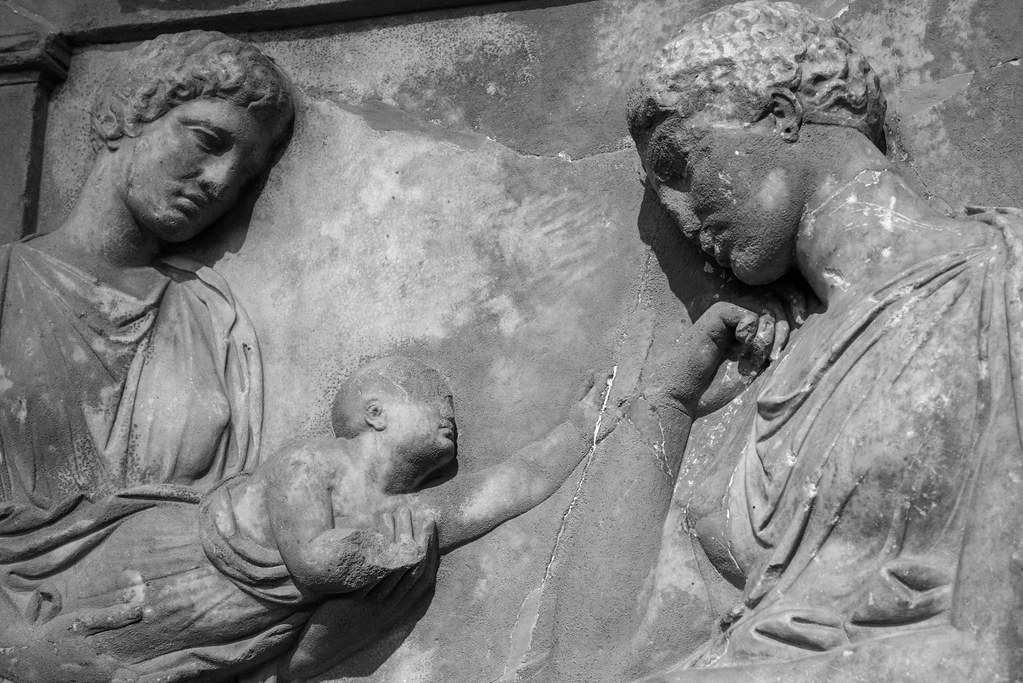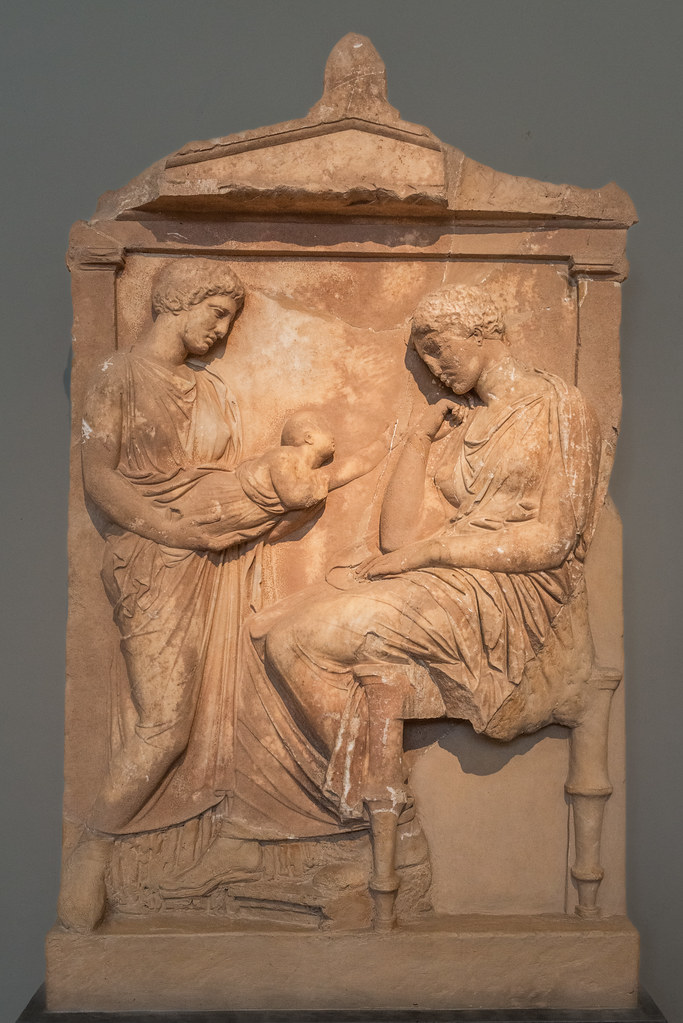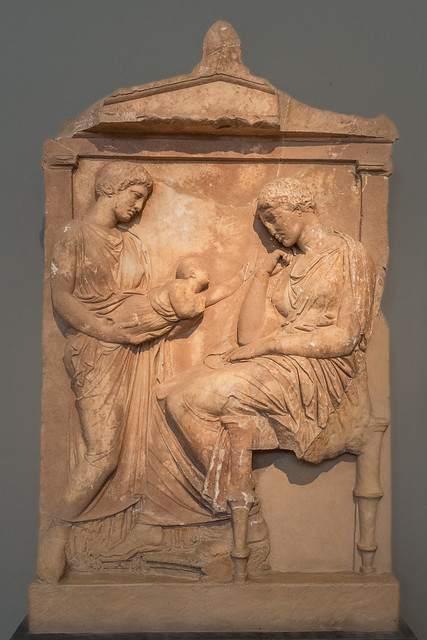In the serene and reflective environment of the Archaeological Museum in Athens, one particular artifact draws visitors into a poignant narrative of loss and longing—a grave stele from the 4th century BC. This striking piece of ancient Greek funerary art tells the heartrending story of Phylonoe, a young mother tragically separated from her beloved child by the inescapable chasm of death.

The stele’s carving is both delicate and evocative, portraying Phylonoe seated on a modest stool. Her face, though rendered in stone, vividly conveys a sorrowful expression as she looks at her baby, held tenderly by another woman. The infant, in a desperate and innocent gesture, reaches out with tiny arms towards its mother, yearning for a touch that will forever remain out of reach. This touching depiction powerfully illustrates the despair and futility of their separation—their forms so close, yet worlds apart.
Above this sorrowful scene, the name “Phylonoe” is immortalized in the epigram inscribed on the epistyle. This inscription serves a dual purpose: it not only identifies the young mother but also ensures that her story and the love she bore for her child are remembered through the ages. The presence of the epigram provides a personal connection, transforming the stele from a mere monument into a narrative of individual human experience.
The artistic craftsmanship of the stele is remarkable. The ancient Greek artist who carved it managed to encapsulate profound emotions in a static image, demonstrating a deep understanding of both artistic technique and human emotion. The expressions and gestures captured in the stone speak volumes about the themes of life, death, and the enduring bonds of love and family.

This grave stele is more than an artifact; it is a testament to the ancient Greeks’ ability to convey complex emotional narratives through their funerary art. It offers a window into the past, showing us that the people of ancient Greece experienced the same deep emotions of love and loss that we do today. The scene on the stele, though centuries old, remains relatable, reflecting the timeless and universal nature of human grief and affection.
For visitors to the Archaeological Museum in Athens, the grave stele of Phylonoe offers a moving and contemplative experience. It stands as a silent witness to a personal tragedy, reminding us of the fragility of life and the enduring nature of maternal love. This poignant artifact not only enriches our understanding of ancient Greek culture but also connects us to the broader human experience, transcending time and space to speak to our shared humanity.
